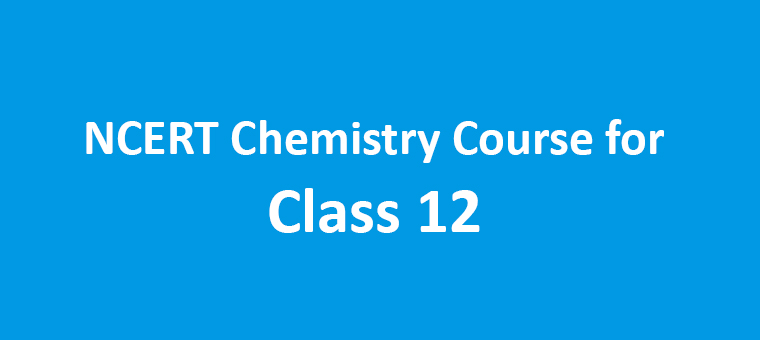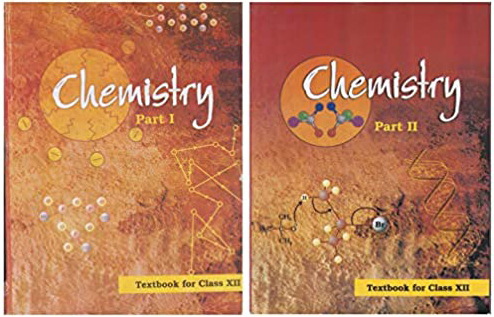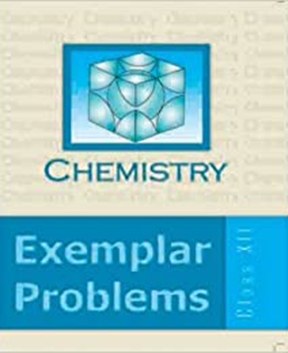NCERT 12th Chemistry Course and Tutorial
Posted by: Admin | 28 May 2020

Standard 12th is the turning point in the life of every student who aspires to achieve something in his life. His devotion to work and a healthy foundation is the basis which can pave his road to success. After being a matriculation pass, every student has to decide what he has to choose for his life, which will prove to be the best for his nearing future. Some may want a stream because of passion or to follow their dreams; some maybe because of family pressure for a particular direction and imitating their peers.
Whatever happens, whether it's out of interest or imposition, one has to pursue the best from it because it is the deciding factor for the future waiting for our arrival. We need to make our subjects strong so that we don't regret later that a little bit of extra effort might have proven useful.
In this article, I will be putting light on the subject, which is an integral part for any science student who wants to pursue Engineering or Medical. The course loved by many, the one with the play of the constituents used in our day to day life, which deals with our surroundings and the reactions which take place and that subject that is Chemistry. We are surrounded by this subject since birth but become aware from the very beginning of our secondary school life and continues till ages.
Chemistry of standard 12th is developed based on the foundation standard in class 11th. Standard 12 Chemistry is quite the core for the students who are planning to pursue Engineering.
To achieve success in any exam related to any science field related to Engineering or Medical, NCERT 12th Chemistry plays a vital role. All the concepts frequently asked in competitive exams are thoroughly covered. The topics are explained elegantly with simple steps and innovative approaches.
This book is written by content experts on the standard 12th Chemistry CBSE syllabus. Most of the boards recommend NCERT as a religious book for their studies. They are helpful to candidates who aspire to score good and easily crack competitive exams.
The way of presenting the content is quite beautiful as it is quite a student-friendly. The contents start from the very basics and go till the most difficult.


Now coming onto the syllabus covered in the book, which every standard 12th student should be well acquainted with.
- Unit I: Solid State
- Classification of solids based on different binding forces.
- Unit cell in two dimensional and three-dimensional lattices
- Band theory of metals, conductors, semiconductors and insulators and n & p-type semiconductors.
- Unit II: Solutions
- Types of solutions
- The solubility of gases in liquids, solid solutions
- Colligative properties
- Vant Hoff factor.
- Unit III: Electrochemistry
- Redox reactions
- Kohlrausch's Law
- Gibbs energy change and emf of a cell.
- Unit IV: Chemical Kinetics
- Rate of a reaction
- Order and molecularity of a reaction
- Activation energy
- Arrhenius equation.
- Unit V: Surface Chemistry
- Adsorption - physisorption and chemisorption
- Enzyme catalysis
- Colloids and suspension
- Tyndall effect
- Brownian movement
- Emulsion - types of emulsions.
- Unit VI: General Principles and Processes of Isolation of Elements
- Principles and methods of extraction - concentration, oxidation, reduction - electrolytic process and refining; occurrence and principles of extraction of aluminium, copper, zinc and iron.
- Unit VII: p - Block Elements
- Group 15 Elements: General introduction, electronic configuration, occurrence, oxidation states, trends in physical and chemical properties;
- Preparation, properties, compounds and uses of: Nitrogen, Phosphorus, Nitric Acid, Ammonia
- Group 16 Elements: General introduction, electronic configuration, occurrence, oxidation states, trends in physical and chemical properties;
- Preparation, properties, compounds and uses of : Dioxygen, Sulphur
- Group 17 Elements: General introduction, electronic configuration, occurrence, oxidation states, trends in physical and chemical properties;
- Preparation, properties, compounds and uses of: Halogens
- Group 18 Elements: General introduction, electronic configuration, occurrence, trends in physical and chemical properties, uses.
- Preparation, properties, compounds and uses of: Nobel Gases
- Unit VIII: d and f Block Elements
- General introduction, electronic configuration, occurrence, oxidation states, trends in physical and chemical properties;
- Preparation, properties, compounds and uses of : KMnO4, K2Cr2O7
- Lanthanoids - Electronic configuration, oxidation states, chemical reactivity and lanthanoid contraction and its consequences.
- Actinoids - Electronic configuration, oxidation states and comparison with lanthanoids.
- Unit IX: Coordination Compounds
- Coordination compounds – Introduction
- Werner's theory, VBT, and
- Unit X: Haloalkanes and Haloarenes
- Haloalkanes: Nomenclature, properties, uses.
- Haloarenes Nomenclature, properties, uses.
- Uses and environmental effects of - dichloromethane, trichloromethane, tetrachloromethane, iodoform freons, DDT
- Unit XI: Alcohols, Phenols and Ethers
- Alcohols: Nomenclature, properties, uses.
- Phenols: Nomenclature, methods of preparation, physical and chemical properties, acidic nature of phenol, electrophilic substitution reactions, uses of phenols.
- Ethers: Nomenclature, methods of preparation, physical and chemical properties, uses.
- Unit XII: Aldehydes, Ketones and Carboxylic Acids
- Aldehydes and Ketones: Nomenclature, properties, uses.
- Carboxylic Acids: Nomenclature, acidic nature, methods of preparation, physical and chemical properties; applications.
- Unit XIII: Organic compounds containing Nitrogen
- Amines: Nomenclature, classification
- Cyanides and Isocyanides
- Diazonium salts: Preparation, chemical reactions and importance in synthetic organic chemistry.
- Unit XIV: Biomolecules
- Carbohydrates - Classification
- Proteins - Elementary idea of α - amino acids
- Hormones - Elementary idea, excluding structure.
- Vitamins - Classification and functions.
- Nucleic Acids- DNA and RNA.
- Unit XV: Polymers
- Classification - natural and synthetic
- Biodegradable and non-biodegradable polymers.
- Unit XVI: Chemistry in Everyday life
- Chemicals in medicines
- Chemicals in food
- Cleansing agents
All the chapters are well covered, and the student can thoroughly revise all the above topics quickly. They include real-life examples and questions which help us to build our mind and shape it accordingly.
Students must deeply go though all the subtopics mentioned above as these are not only helpful for scoring in boards but also in competitive exams like JEE.
There is one supplementary book with NCERT 12th Chemistry that is Chemistry exemplar. This is an excellent book that has Multiple Choice Questions (MCQ) and subjective ones too. These two books are the one which paves your way for a glorious success.